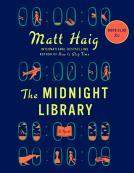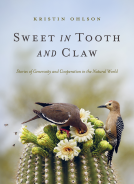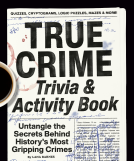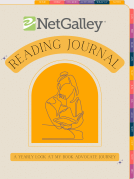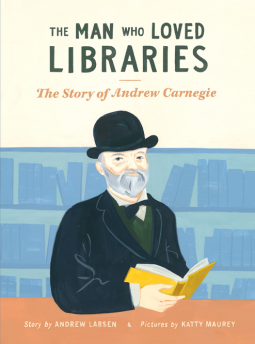
The Man Who Loved Libraries
The Story of Andrew Carnegie
by Andrew Larsen
This title was previously available on NetGalley and is now archived.
Send NetGalley books directly to your Kindle or Kindle app
1
To read on a Kindle or Kindle app, please add kindle@netgalley.com as an approved email address to receive files in your Amazon account. Click here for step-by-step instructions.
2
Also find your Kindle email address within your Amazon account, and enter it here.
Pub Date Aug 15 2017 | Archive Date Dec 20 2017
Owlkids Books | Owlkids
Description
Carnegie believed strongly in sharing his wealth, and one of the ways he did this was by funding the construction of over 2,500 public libraries around the world. His philanthropy completely revolutionized public libraries, which weren’t widespread at the time.
Told in simple, lyrical text, the story unfolds against striking, stylized illustrations that transport readers to the bustle and boom of the Industrial Revolution. An informational spread explains more about Carnegie’s life and work.When he was a child in the 1840s, Andrew Carnegie and his family immigrated to America in search of a new beginning. His working-class Scottish family arrived at the height of the Industrial Revolution. Carnegie worked hard, in factories and telegraphy. He invested in railroads, eventually becoming the richest man in the world during his time.
Available Editions
| EDITION | Other Format |
| ISBN | 9781771472678 |
| PRICE | $16.95 (USD) |
| PAGES | 32 |
Featured Reviews
 Sara P, Bookseller
Sara P, Bookseller
I couldn't resist downloading this from NetGalley. Andrew Carnegie's life had its controversies of course with his union busting actions, but you cannot deny the legacy he left building libraries all over the world. As someone who grew up right outside of Pittsburgh, in a town named Carnegie, those libraries were places where I could dream and they formed me into who I am today. This is wonderful book for children (and adults) to learn about this great man's work and legacy.
This is a very brief introduction to Andrew Carnegie's "rags to riches" story and how reading helped him succeed and how the generosity of people made him want to give back to others. This book could be easily tied to units on the Industrial Revolution, investments and stocks, and the importance of reading.
 Rogene C, Educator
Rogene C, Educator
An entertaining and lovely tale about a young boy who feel in love with knowledge and containers of truth.
 Michael S, Reviewer
Michael S, Reviewer
A history book for children. Written in an unpretentious, matter-of-fact way, with words and pictures that respect the intellect of kids while promoting a love for books and reading. Andrew Carnegie did much to help the disadvantaged and is responsible for many libraries throughout our country. The book also is honest about what a ruthless businessman Carnegie was and how he sometimes mistreated his workers. But the book does so much to further social awareness and offers hope to all who desire to lift themselves up and succeed. Acquiring a love for reading cannot possibly hurt in establishing one's place in the world, and is a fine place to begin a life journey.
 Ryan A. F, Librarian
Ryan A. F, Librarian
A wonderful, wonderful story about Andrew Carnegie’s legacy. How he grew up and wanted an education, so he sought one in books. When he made his fortune, he gave back buy building libraries that were to remain free to the people who use them. I also really like the real life pictures of things Carnegie built, as well as showing one of his steel mills. They didn’t shy away from saying that some perceived him as a bad man for his work practices either. A well done book for any library, not just Carnegie libraries.
Added Goodreads
Added Litsy
The thing we forget about the Industrial/Guilded age was that when people got rich, as so many people did, that they gave back. I know it is odd to think there was a time that millionaires and billionaires gave back to the community, but it did happen.
This book is the story of the man responsible for the Carnegie libraries around the US and around the world, as well as Carnegie Hall. When he made his money, he gave it back so that the common people had something real, real libraries to read books for free. It is kind of amazing to think that something so many of us take for granted was not around until Carnegie started them.
This is a great picture book, which explains simply, the life history of Andrew Carnegie. It also explains in the back, about while he was good to the common people, he was not to his workers, which is also important to know.
Thanks to Netgalley for making this book available for an honest review.
This is a brief non-fiction account of classic 'rags to riches' life story of Andrew Carnegie, however, the focus is on his love for acquiring an education for himself and reading as well as his philanthropic work. The main reason I adored this little book was because of the fact that you hardly get books about libraries and people who made precious gems like books available to the general public; learning about Carnegie's struggles in life and the fact that this story features an era without public libraries made me appreciate public libraries and books definitely more.
Apart from that, the story is filled with so many important themes - themes that children could benefit from, such as the power of determination and the will to achieve your goals as well as the significance of helping other people and giving back to the community that contributed into making you who you are. A book for children that encourages them to chase their dreams, share and give charity to a cause that can make education available to a wide range of people is so important and this book does just that. It's also crucial for children to admire the philanthropic work of a significant historical figure rather than his affluent lifestyle and by focusing on different aspects of Carnegie's life this book effortlessly manages to do that. The story also highlights the changes in people's lives resulting from the Industrial Revolution and can be used to make children understand the differences that came about e.g. solo workers like weavers who produced products from their home losing their job and worth to mills.
In addition to this, the book criticised Carnegie for his immoral practices in crushing the unions the workers in his factory tried to create which is great because instead of sugarcoating or just showing the good, most evident side of a figure, they don't shy away from highlighting the wrongs that he committed. Also the fact that he was an immigrant and gave back so much to his country, might teach children an important lesson of respecting people from different origins and celebrate the diversity that resides in their country.
The simple language and the aesthetically pleasing illustrations make this book accessible and welcoming as well as the fact that it is a quick read covering amazing content - definitely check this one out!
 Sarah F, Librarian
Sarah F, Librarian
This picture book is full of beautiful illustrations and shares Andrew Carnegie's life story and love for libraries. I appreciate that the factual information in the back of the book after the story briefly addressees the Homestead Strike; while Carnegie did much good with his libraries, as the book says, his relationship with his workers was complicated (to say the least).
 Myra Z, Educator
Myra Z, Educator
As other reviewers have pointed out, this title emphasizes the philanthropy of Andrew Carnegie, primarily the libraries he built around the world. This is a very significant message. So is the book's message of the power of reading and learning. What is downplayed are the terrible working conditions in factories and Carnegie's harsh treatment of his own employees. Illustrations also soften the conditions in Pittsburgh and in factories. I would use this book as one among many when discussing Carnegie. His actions of giving back to society are important to recognize.
 C. L, Book Trade Professional
C. L, Book Trade Professional
This is exactly the type of story I love to share with my children. Andrew Carnegie's life of hard work then generous giving, especially to libraries, makes for a lovely picture book. The story is well-told, the illustrations are very nice and I love the message of the story.
The story and unique illustrations of The Man Who Loved Libraries create a wonderful way for elementary aged children to learn about Andrew Carnegie. The overriding message of how he always gave back because of that kindness was given to him, really makes this book stick with a young reader. After the story, there is a section describing Andrew Carnegie's legacy and some of the structures he built.
 Marilyn P, Reviewer
Marilyn P, Reviewer
I love biographies and this one will not disappoint. Andrew Carnegie is even now known throughout the world for his spectacular libraries which enable people to borrow books for free thus promoting the love of reading and learning in their lives.
In 1848 Andrew and his family immigrate to America. His dad, a weaver by trade in their hometown in Scotland, is becoming obsolete so he moves his growing family across the ocean to start a brand new life.
They arrive in the USA at the peek of the Industrial Revolution and are able to carve out a wonderful life for themselves. Young Andrew works very hard mastering tasks set before him in factories and telegraphy. He continues to learn and better himself, investing in railroads and the steel industry and becomes a very wealthy man.
His fortune enables him to bless others as he had been blessed. He "used his own money to build public libraries so others could have the same opportunity." These libraries are constructed all around the world and are still functioning today. In fact he builds over 25,000 of them. He sets up the Carnegie Corporation which promotes peace and education worldwide and even helps to put Sesame Street on television.
Even though he died a long time ago, Andrew Carnegie's money is still helping people today. His story is one of giving, sharing and being grateful for the opportunities that have been given to you. It is inspirational and shows us that helping others is very important and that everyone can make a difference when they decide to give back out of their abundance.
The illustrations perfectly reflect the time-period and the language of the text is simple and easy to understand. I especially like how the author includes actual information at the end of the book and doesn't shy away from Carnegie's authoritative (and crushing) stand he takes against his workers when they try to unionize. Definitely a book to consider. History is always a wonderful thing to share with your kids.
 Becky B, Librarian
Becky B, Librarian
A picture book biography of Andrew Carnegie, who worked his way up from an immigrant bobbin boy to one of the wealthiest men in America. He invested much of his wealth in philanthropic interests, such as building libraries. This book focuses on how a library was important to Carnegie growing up and how that inspired him to build more libraries. Further information on Carnegie, his philanthropic endeavors, and how he went about deciding where to build libraries can be found in the back of the book.
A great introduction for kids to a man who has an enduring legacy in the arenas of arts and education. The story is told in an engaging way, the illustrations are eye-catching, and I’m sure there are many kids who will read this and be inspired to try and emulate Carnegie’s hard work and wise investments. I also like the way it highlights the importance of libraries for the public and knowledge in general. I’ve always admired the way that Carnegie didn’t just build libraries any old place, the town had to commit to investing in it and ensuring that it stayed open and a free public library. It was a great model of getting local buy in for a philanthropic endeavor and you can ask kids how to apply this in their own philanthropic endeavors. You might be surprised by what they come up with. Definitely getting a copy of this book for our elementary library.
 Allison M, Librarian
Allison M, Librarian
As someone who works in the world's first Carnegie library, in Andrew Carnegie's home town of Dunfermline, I simply had to read this book! Thank you so much to NetGalley and Owlkids Books for letting me have an ARC of The Man Who Loved Libraries.
This is a really good short introduction to Andrew Carnegie, and to ideas of sharing and philanthropy, for school-children. I am surprised to see Dunfermline described as a village (it was a Royal Burgh; a birth and burial-place of Scottish royalty, eg. St Margaret and Robert the Bruce are buried at Dunfermline Abbey; and the 1841 census records the Dunfermline parish population as 19,778). Aside from this I found the book to be highly readable and full of accurate information. The book is brief so there is no mention of the Peace Palace, funding of swimming baths and church organs etc but I am glad that there is reference to Carnegie's attitude and actions with regard to workers' unions, as this is important, and gives children a more complex view of Carnegie.
The illustrations within the book are attractive and suit the subject matter well.
I will be recommending this book far and wide!
Being a bookworm, there isn't any possibility of not liking libraries. In fact, I love them and frequent my local ones quite frequently. That's why I wanted to discover more about Andrew Carnagie and how his life was related with these community places.
It was a strong surprise (but a quite pleasant one) to discover how his vision could create means to develop such important projects to improve the access of books to everybody.
I didn't know Andrew Carnagie before reading this small book so just the story by itself was amazing. But let's not forget this book was written to be read by children and to children. It was quite evident the language was simple (and adequate) as well as catchy to get the attention of the target group.
The illustrations were sweet but effective and very engaging. I finished this little book in 30 minutes and felt satisfied, it was a good instrument to introduce the libraries as a place to enjoy to the children, not only as a personal experience, but as a place to grow and develop new skills with family and friends.
When I saw this book available I knew I had to read it. As a librarian, it is well known all of the good work that Andrew Carnegie did for establishing public libraries in America. I have worked in several Carnegie libraries over the years. Knowing the enormous contributions Carnegie made towards libraries, I was thrilled to see a children's book that not only shared this important history of libraries, but also touched on hard work and self education. I also appreciated that the author chose to include information at the end of the book that touched on the fact that Carnegie's relationship with the working man was not always charitable.
The Man Who Loved Libraries would be a great book for children learning about public libraries or the titans of industry. However, the colorful illustrations would interest any child.
 Rachel S, Librarian
Rachel S, Librarian
I couldn't resist requesting this book because, hello, libraries. As a librarian and book lover I think it's incredibly important to have a resource such as this for young children to learn about related library history and important historical figures. Plus, the illustrations are adorable. Highly recommend!
 BreAnna H, Reviewer
BreAnna H, Reviewer
Want a book that is not only visually pleasing to all readers but will get children excited about libraries? This book did the trick in my household. Andrew Carnegie’s story was will written and beautifully illustrated.
Reading a children’s book always makes me feel calm and relaxed. It must be the illustrations or maybe it is the use of language that all can understand. With this book there was the beauty of life, and struggle within the history by this pillar of a man. I was eager to share this story with my daughter, and we read it three times in a row. We talked about the pictures, and the people.
One aspect of the illustrations was the ability to create a dialogue about the pictures. We read the words then made up our own stories. Though my daughter is three she had a great time talking about what books Andrew was reading!
 Tracy H, Librarian
Tracy H, Librarian
As a librarian, I love this book. It is important to get these biographies into the hands of our young readers. This one shows the angle of Carnegie's move to America as a young boy, his working-instead-of-school life, and then his how he shared his wealth with others - namely opening libraries around the world to make books more accessible.
Andrew Carnegie started out in life in Scotland, the son of a weaver. He and his family came to the United States, where he went to work; first, in a cotton mill, then as a messenger boy. He knew the key to success was in learning, and took advantage of the opportunities afforded by a local businessman, who made his private library collection available. As he became wealthier, he considered it his duty to help others help themselves: he built libraries. He built a library in the Scottish village where he was born, and went on to build over 2500 public libraries worldwide.
Andrew Larsen gives readers a concise biography of a premier industrialist and philanthropist, with a strong emphasis on the power of education and philanthropy. Award-winning illustrator Katty Maurey creates beautiful artwork to accompany Larsen's text, framing her subjects with buildings and storefronts, and creating depth with her full-page art to show us a young Carnegie, standing on a library ladder as he explores Colonel Anderson's private collection, and an older Carnegie in front of a map of the Americas (and Greenland), basket of yellow flags on one arm, surrounded by books and his dog as he maps out his library plans.
Andrew Larsen is an award-winning children's author. Find more about his books and link to his blog by visiting his author website.
 Reviewer 421806
Reviewer 421806
This is the story of Andrew Carnegie....from a small village in Scotland to the accomplished businessman we all know. They portrayed his hard work ethic, love for learning, and philanthropy in a way that will engage the youngest of learners.
 Lorea A, Librarian
Lorea A, Librarian
A good overview of his history and accomplishments but not a balanced view of his life.
 Reviewer 60249
Reviewer 60249
A book to inspire children, helping them understand the value of hard work and learning. Andrew Carnegie's life story--poverty in Scotland, immigration to the United States, taking a factory job at age 12 after his arrival, love of learning, advancement in business, and philanthropy are described in this engaging book for young readers.
This book was a super interesting look into the life and legacy of Andrew Carnegie. I appreciated that the end notes mention some of the not so great parts of his career. The pictures were beautiful and interesting to look at. My only critique is that the story may only be appealing to some children due to the fact that they don't know who this man is.
 Beth T, Reviewer
Beth T, Reviewer
The Man Who Loved Libraries: The Story of Andrew Carnegie is a children's biography written Andrew Larsen and illustrated by Katty Maurey.
In thirty-two pages, this informative and interesting book focuses on the life of Andrew Carnegie, particularly his desire for learning and love of libraries, which prompted Carnegie to build over 2,500 libraries throughout the world, including the United States, Canada, Australia, New Zealand, and the United Kingdom, as well as across Europe and the Caribbean.
The Man Who Loved Libraries is a quality resource for children, particularly ages four to eight, yet it's worthwhile for all grade school students.
Note: I received this book from NetGalley, which is a program designed for bloggers to write book reviews in exchange for books, yet the opinions expressed in this review are my own.
 Emma B, Librarian
Emma B, Librarian
I thought this was a lovely book - great illustrations and easy-to-understand information about Carnegie and the amazing philanthropic work he undertook. As a former public librarian, I appreciate immensely all he did to support public libraries - and I love that this book is celebrating his life and works.
 Producervan E, Reviewer
Producervan E, Reviewer
The Man Who Loved Libraries, The Story of Andrew Carnegie by Andrew Larsen. Illustrated by Katty Maury. Owlkids Books. 5 Stars. Super easy biography of Andrew Carnegie with nice, mellow illustrations about the man who gave us the Carnegie libraries and Carnegie Hall, who in his widespread philanthropy did not forget to bestow a library upon his home town of Dunfermline in Scotland. Highly recommend! Thanks to NetGalley and Owlkids Books for providing this ebook for review.
 Wayne M, Reviewer
Wayne M, Reviewer
'The Man Who Loved Libraries: The Story of Andrew Carnegie' by Andrew Larsen with illustrations by Katty Maurey is a picture book about one of America's greatest philanthropists.
The story begins when Andrew Carnegie was a boy in Scotland. Andrew's love of learning started early and followed him as his family immigrated to America. He was helped by a man named Colonel Anderson who had a private library that Andrew could use. That love of libraries continued, even after Andrew Carnegie became very rich. He founded a number of libraries with his wealth, along with Carnegie Hall in New York.
The book ends with an essay titled Andrew Carnegie's Legacy. It goes in more depth into Mr. Carnegie's life, and talks about the many things that Andrew Carnegie helped build. His troubled relationship with his employees is also mentioned. The book also includes a list of sources for further reading.
The illustrations look a bit like watercolor and the colors used run toward the pastel shade. They work well for this book. I like non-fiction for children, and this was an interesting book.
I received a review copy of this ebook from Owlkids Books and NetGalley in exchange for an honest review. Thank you for allowing me to review this ebook.
 Niki W, Reviewer
Niki W, Reviewer
Although this book outside of my children's age range, it is a wonderful history lesson on a very prominent, although humble, public figure. Every child (and the parents that love them) should read this wonderfully illustrated book. Well-done!
 Ana C, Librarian
Ana C, Librarian
I love picture book biographies. I loved to learn about Andrew Carnegie. I loved the illustrations. We need more Carnegies in the world.
 Michelle G, Librarian
Michelle G, Librarian
Larsen gives young readers a very brief introduction to the rags to riches story that was Andrew Carnegie. The book briefly discusses the fact that he made his fortune because of the railroads and his knowledge to invest in companies that produced oil, iron, and steel. More importantly to this story, Carnegie never forgot the kindness of Colonel Anderson who had opened his library to him, so with his riches, Carnegie built the first public library in the small Scottish village where he was born. Then he continued to build libraries around the world.
Many things can be said about Andrew Carnegie. His was a true rags to riches story, but his dealings with his employees weren't always fabulous. The Carnegie Steel Company had some notorious strikes that sullied his name a bit in the history books. That said, he was quite the philanthropist. As the book says, "He believed that riches are for sharing. He believed in helping others to help themselves."
This is a great way to engage young minds on history and to promote the notion that giving back to your community is essential. Larsen makes it easy for children to understand the good that Carnegie did by showcasing a library filled with children, something that many children can relate to.
We often forget that until men like Andrew Carnegie made their vast fortunes, there were fewer opportunities to equalize among classes. He created the Carnegie Corporation of New York in 1911 “to promote the advancement and diffusion of knowledge and understanding,” and they are still doing important work today.
 Chris W, Media/Journalist
Chris W, Media/Journalist
This is a great introduction to Carnegie's life. The focus is on his gift of libraries, but I appreciate that it includes the story of his family's immigration and his philanthropy, while at least mentioning his complicated legacy with workers. Given the recommended age for readers of this book, that is probably enough. I think this can be a great classroom supplement as students study immigration and the Gilded Age, and it gives teachers the opportunity to introduce the importance of workers' rights in a complex era.
When I was growing up, the library was magical to me. (They still are). My local public library was a wonderfully built neo-classical blonde stone building full to bursting with books which could take me anywhere and anywhen and I had a card of my own, and by gosh I knew how to use it! And that smell... it still transports me to a seriously happy place.
The point is, my first, beloved, public library was a Carnegie library, built with funds from the Carnegie foundation. I've always been fascinated by the concept of noblesse oblige which seemed to be expected of the wealthy and powerful in all but the most modern times. The concept is sadly outdated now (with a few exceptions). Andrew Carnegie was the quintessential bootstrap success story, running messages, working his way up through the ranks, investing and becoming hugely wealthy and influential. He gave quite a lot of that wealth back to communities all over the world by endowing over 3,000 libraries along with many other charitable contributions.
This book, by Owlkids Books , is a beautifully illustrated short biography aimed at young readers. The writing style is unforced and not patronizing. The art is lovely and simple and compliments the story very well. The author also doesn't shy away from writing about the inherent dichotomy of funding open and free access to libraries and learning and supporting communities on the one hand, and his anti-worker, profit driven, union breaking activities on the other hand. I enjoyed reading this small book very much and recommend it unreservedly. Delightful book, well written.
I still remember the thousands of hours I spent in 'my' beloved hometown library. I wonder if the librarians knew how much they shaped me and comforted and inspired me? I never really got to tell them, but I thank librarians and teachers often to this day, and it really started with the people in this library.
Being a librarian I have a soft spot for Andrew Carnegie. I think this is a great introduction to him.
 Laura T, Reviewer
Laura T, Reviewer
I really enjoyed this informative book about the life of Andrew Carnegie. I thought the pace of the story was well done -- it covered important information without getting bogged down in words, and the illustrations were nice too.
The narrative traces Carnegie's life from his poor beginnings in Scotland, to working his way up from factory worker to steel mogul in America, and then focuses on his charitable work building libraries all over the world.
At the end there were a couple pages of more detailed information, including the aside that Carnegie's relationship with his workers was "complicated," noting how he clashed with employees who were trying to unionize. Although this wasn't what the book was about, I appreciated this tidbit because it helped avoid putting Carnegie on too much of a pedestal -- though it was certainly inspiring to read about how he believed his riches were for giving away, and rather than just starting "charities," he truly wanted to empower people to help themselves.
 Amanda D, Reviewer
Amanda D, Reviewer
I loved this book. The illustrations are beautiful and the story is written in a way the children can easily understand. I believe this is a book that should be read to all children for many reasons. They should know that it was one mans passion that brought public libraries to life and that when you are fortunate enough to have a lot of money you should try and better the world around you. I also enjoyed the other historical facts in the back of the book that Carnegie contributed to.
I recommend this book to everyone.
 Emma F, Reviewer
Emma F, Reviewer
One of my frustrations with our tiny local library system is that we can't get very many good picture books. For that reason I'm always thrilled when I can find a good picture book online to review; I always read them to my little boys. It would be better if we could have the physical book to read, but this is better than nothing! One of my recent finds was The Man Who Loved Libraries, the story of Andrew Carnegie.
Andrew Carnegie was born in Scotland. His father was a weaver, but it was getting to be impossible to make a living weaving at home, as people wanted to buy cloth from the big weaving mills. What should the family do? Move to America, of course! They found a home and work in Pittsburgh. They were still poor—but now there were opportunities to advance.
Within a relatively short time, Andrew became a rich man—and what did he do with his riches? He didn't hoard it for himself; he used a lot of it to build libraries around the world, even in New Zealand, so other people would have the chance to learn and improve their lives. I had heard of the Carnegie Libraries, as well as the Carnegie Institute in New York City, so it was very interesting to read the background.
I liked the pictures in this book. They are simple, somewhat stylized but fairly realistic, paintings. They really add to the story. This is a great picture book to share with children who enjoy true stories, and a good way to introduce the concept of public libraries and their purpose and origin.
I received a free ecopy of this book from NetGalley and chose to write a review.
Readers who liked this book also liked:
Silvia Moreno-Garcia
Historical Fiction, Literary Fiction, Sci Fi & Fantasy
Robin Soans, Claudia Roden
Cooking, Food & Wine, Nonfiction (Adult), Travel


